Motorola Mobility P56MD1 Portable Cellular/ PCS CDMA and 2.5 GHz WiMAX Transceiver with WLAN and Bluetooth User Manual APPLICANT MOTOROLA INC
Motorola Mobility LLC Portable Cellular/ PCS CDMA and 2.5 GHz WiMAX Transceiver with WLAN and Bluetooth APPLICANT MOTOROLA INC
Contents
Exhibit 8 Users Manual 4

42 2E. Calendar & Tools
Timer
To set a timer:
1. Touch > Alarm & Timer > Timer.
2. Set a time and touch Start.
Ⅲ
For timer details, touch > Settings, change
your settings, and then touch Done.
Help Center
ᮣ
Touch > Help Center.
You can also flick your home screen left or right to
see the Tips & Tricks widget.
Calculator
Your phone comes with a handy calculator.
ᮣ
Touch > Calculator.
Your calculator has basic and advanced views. To
change views, touch > Advanced panel/Basic panel.
To clear history, touch > Clear history.
Quickoffice
Use Quickoffice to create, view, and edit text
documents and spreadsheets.
ᮣ
Touch > Quickoffice.
Create a New File
To create a new file, touch the icon of the type of file
you want to create, then touch Create New Document.
Open a Document
To open an existing file, touch the icon of the type of file
you want to edit, touch SD Card, to search for a file, or
touch Recent Documents.
Browse Files
To browse files on your memory card, touch Browse >
SD Card. Touch a file or folder to open, or touch and
hold a file for options. You can edit most text or
spreadsheet files:
Tips:
ⅷ
Place your cursor by touching the text.
ⅷ
Select text by double-touching it.
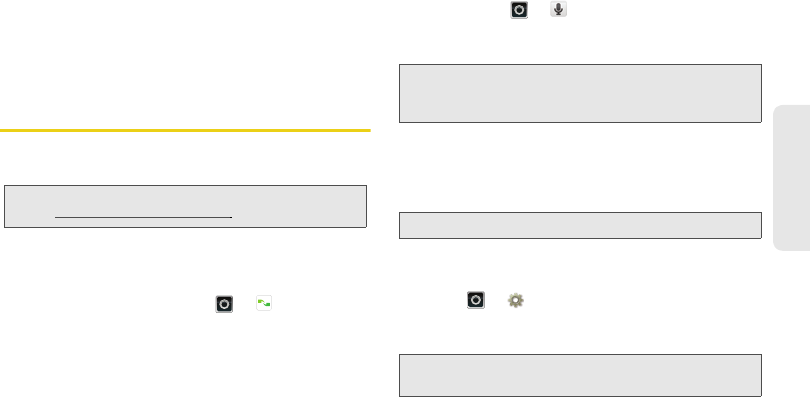
2E. Calendar & Tools 43
Calendar / Tools
ⅷ
Choose formatting, save the file, or choose other
options by touching Menu /.
To manage your folders and transfer files, see “USB
and Memory Card” on page 125.
Accessibility
See, hear, speak, feel, and use. Accessibility features
are there for everyone, helping to make things easier.
Voice Recognition
Use your voice — just touch and speak.
ⅷ
Dialing and commands: Touch > Voice Control.
To dial, say “Call” and then a contact name or phone
number. Or, say a command from the list shown, like
“Send Text” or “Go To”.
ⅷ
Search: Touch > Voice Search, and then say
what you want to search for, like “Motorola
accessories”.
To change our voice settings, see “Voice Settings” on
page 44.
Voice Readouts (TalkBack)
Your navigation and selections, read out loud.
ᮣ
To turn on voice readouts (similar to TalkBack),
touch > Settings >Accessibility. Touch
Accessibility to enable the settings, then touch
TalkBack and then touch Voice Readouts.
To use voice readouts:
Note:
For general information, accessories, and more, visit
www.motorola.com/accessibility
.
Tip:
Speak naturally, but clearly. Use the microphone in a
similar way to a speakerphone, so no need to shout or
hold the phone close to your mouth.
Note:
This feature is only available in English and Spanish.
Note:
You may be asked to download additional “text-to-
speech” software (data charges may apply).
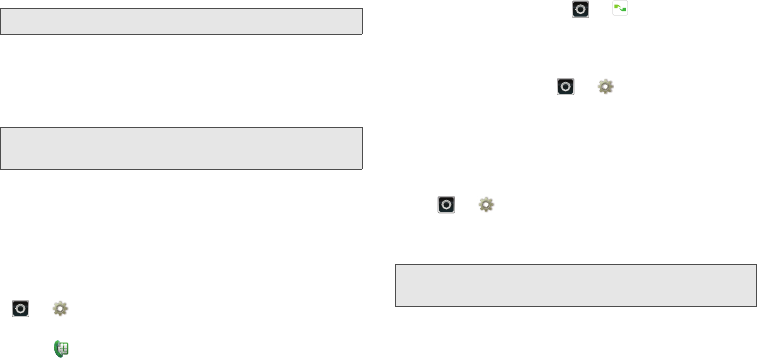
44 2E. Calendar & Tools
ⅷ
Menus and screens: In menus and screens, touch an
item to highlight it (the item will be read out loud),
and double-touch to open it.
ⅷ
Dialer & text entry: As you type, each number or letter
is read out loud.
ⅷ
Notification: When you flick the notifications bar
down, all notifications are read out loud.
To change your voice settings, see “Voice Settings” on
page 44.
Caller ID
When you want to hear who’s calling:
ⅷ
Read out loud: Have your caller announced — touch
> Settings > Call settings > Caller ID readout.
ⅷ
Ringtones: Assign a unique ringtone to a contact —
touch Dialer > Contacts, open a contact, and then
press Menu / > Options > Ringtone.
Voice Settings
Personalize your voice settings:
ⅷ
Voice commands: Touch > Voice Control >
Menu / > Settings. From here, you can refine
recognition of your voice (Adaptation) and set options
like Audio Modes and Sensitivity.
ⅷ
Text-to-speech: Touch > Settings >
Text-to-speech. From here, you can set options like
speed and language.
Volume and Vibrate
Choose volume and vibrate settings that work for you.
Touch > Settings >Sound & display:
ⅷ
Volume: Touch Ringer volume or Media volume and
use the sliders.
ⅷ
Vibrate: Select Vibrate to feel your phone ring.
Note:
Touching a home screen widget or shortcut will open it.
Tip:
Navigate through your apps and menus to hear how
voice readouts work on your phone.
Tip:
To set separate ring and notification volumes, uncheck
Use incoming call volume for notifications
.

2E. Calendar & Tools 45
Calendar / Tools
Zoom
Get a closer look. Open a magnification window that
you can drag around the screen, or pinch to zoo in on
maps, web pages, and photos.
ⅷ
Magnification window: Touch > Settings >
Accessibility. Touch Accessibility to enable the
settings, and then touch Zoom Mode.
ⅷ
Pinch to zoom: To zoom in, touch the screen with two
fingers and then slide them apart. To zoom out, drag
your fingers together.
Display Brightness
Set a brightness level that works for you. Touch
> Settings >Sound & display > Brightness.
Make sure that Automatic brightness is unchecked so
you can set your own level.
Touchscreen and Keys
All these touch features are great, and sometimes it is
nice to hear or feel your touches too. Touch >
Settings >Sound & display:
ⅷ
Touchscreen: To hear screen touches (click), touch
Audible selection.
ⅷ
Touchscreen Keys: To feel key touches (vibrate),
touch Haptic feedback.
ⅷ
Dial pad: To hear touch tones when you dial a phone
number, touch Audible touch tones.
Hearing Aids
To help get a clear sound when using a hearing aid or
cochlear implant, your phone may have been rated for
use with hearing aids. If your phone’s box has “Rated
for Hearing Aids” printed on it, then please read the
following guidance.
ⅷ
Settings: Touch > Settings >Call settings >
Hearing aid compatible. Select Microphone to
optimize your phone for microphone coupling, or
select Telecoil to optimize your phone for telecoil
coupling.
ⅷ
Call volume: During a call, press the side volume
keys to set a call volume that works for you.
Note:
Ratings are not a guarantee of compatibility. See “Using
Your Phone With a Hearing Aid Device” on page 147.
You may also want to consult your hearing health
professional, who should be able to help you get the
best results.

46 2E. Calendar & Tools
ⅷ
Position: During a call, hold the phone to your ear as
normal, and then rotate/move it to get the best
position for speaking and listening.
TTY
You can use your phone in TTY mode with standard
teletype machines. Touch > Settings >Call
settings > TTY and select the mode you need:
ⅷ
TTY: Type and read text on your TTY device.
ⅷ
HCO: Hearing-Carry-Over — type text on your TTY
device and listen to voice replies on your phone’s
speaker.
ⅷ
VCO: Voice-Carry-Over — speak into your phone and
read text replies on your TTY device.
Refer to your TTY device guide for mode and usage
information.
Note:
You’ll need a cable/adapter to connect your TTY
device to the headset jack on your phone.

2E. Calendar & Tools 47
Calendar / Tools
Updating Your Phone
Stay up to date with the latest software updates for your
phone. You can check, download and install updates
using your phone, or using your computer:
ⅷ
Using your phone:
You may get an automatic notification of an
available update on your phone. Simply follow the
instructions to download and install.
To manually check for updates, touch >
Settings > About phone > System updates.
Your phone downloads any updates over your
mobile network. Remember, these updates can be
quite large (25MB or more) and may not be
available in all countries. If you don’t have an
unlimited data plan, or mobile network updates are
not available in your country, you can update using
a computer.
ⅷ
Using your computer:
On your computer, go to www.motorola.com, search
for your phone model, and check the “Software”
links. If an update is available, follow the
installation instructions.
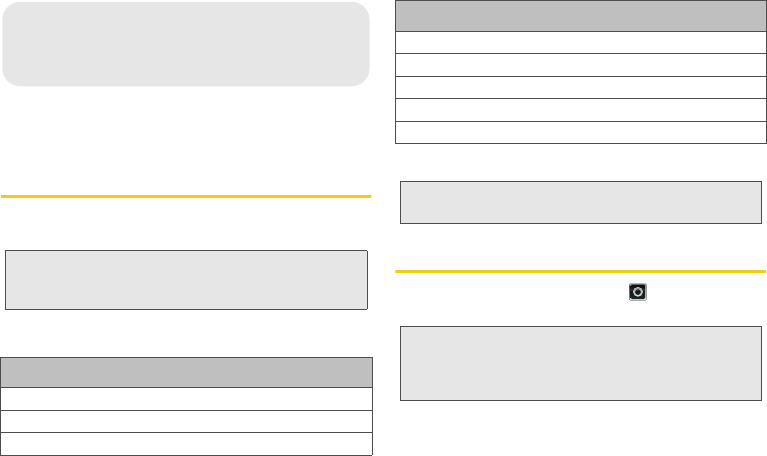
48 2F. Voice Services
ࡗ
Voice Actions (page 48)
ࡗ
Voice Commands (page 48)
Voice Actions
ᮣ
To begin a voice search, press the Voice key on
the keypad.
Or, press the Voice key and say one of the following
commands:
Voice Commands
For more voice commands, touch > Voice
Commands and follow the prompts.
Note:
If you’re writing a text message, press the Voice key to
begin dictation mode. Your phone recognizes words
you speak and enters them into your message.
To... Say...
Map a route “navigate to”
Send a text message “send text”
Make a call “call”
2F. Voice Services
Send email “send email”
Find local businesses “map of...”
Browse the web “go to”
Make a voice note “note to self”
Get directions “directions to”
Tip:
To learn more about voice actions, press the Voice key on
the keypad, and then select
Watch Video.
Tip:
For quick access to Voice Commands, add a shortcut to
one of the home screens. Touch and hold an empty area,
and then touch
Shortcuts
>
Applications
>
Voice
Commands
.
To... Say...
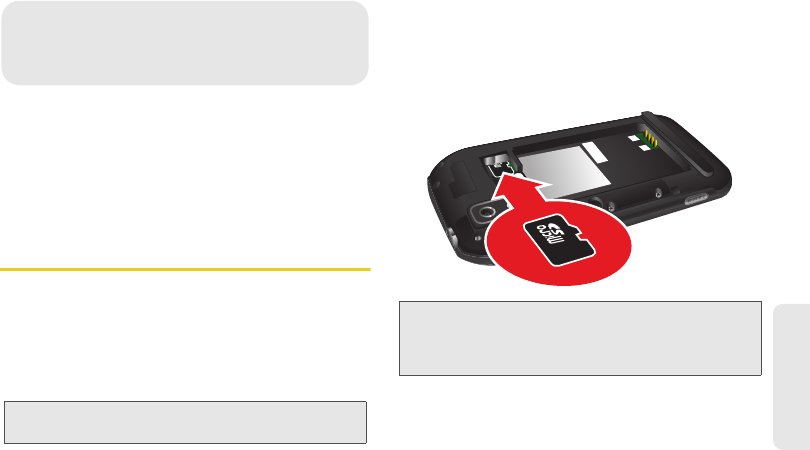
2G. microSD Card 49
microSD Card
ࡗ
Using a microSD Card With Your Phone (page 49)
ࡗ
microSD Settings (page 51)
ࡗ
File Manager (page 52)
ࡗ
Connecting Your Phone to Your Computer (page 52)
Using a microSD Card With Your
Phone
Using the microSD Card Slot
Your phone is equipped with a microSD (Secure
Digital) memory card slot to expand the phone’s
available memory space. It allows you to store images,
videos, music, and voice data in your phone.
Inserting the microSD Card
1. Remove the battery cover. (See “Installing the
Battery” on page 14.)
2. Open the memory card slot cover, and slide in the
memory card until it clicks into place.
3. Close the memory card slot cover and replace the
battery cover.
Note:
You need the memory card installed for some features
on your phone, such as
Camera
.
2G. microSD Card
Note:
Be sure to use only recommended microSD cards.
Using non-recommended microSD cards could cause
data loss and damage your phone. Your phone can be
used with Transflash or microSD memory cards.
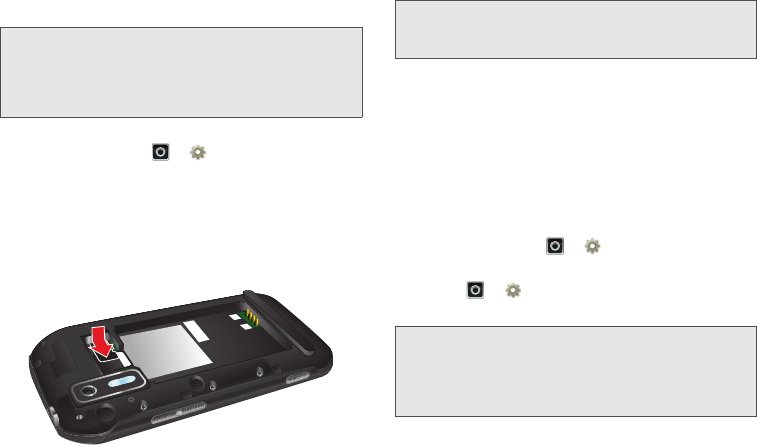
50 2G. microSD Card
Removing the microSD Card
1. Before you remove your memory card you need to
unmount it. Select > Settings >
SD card & phone storage > Unmount SD card.
2. Once your phone confirms that it is safe to remove
the microSD card, remove the battery cover and
open the memory card slot cover.
3. Grasp the raised edge of the microSD card and
pull the card out.
4. Close the memory card slot cover and replace the
battery cover.
Formatting Your Memory Card
If you are having difficulty with a memory card, you may
format the card using your phone. This process
removes any data on the card and sets up a new folder
system.
1. Before you format your memory card you need to
unmount it. Select > Settings >
SD card & phone storage > Unmount SD card.
2. Select >Settings > SD card & phone
storage > Format SD card > Format SD card.
Important:
Do not remove the memory card until you select
the
Unmount SD card
option under
SD card &
phone storage
. Removing the memory card
before selecting the
Unmount SD card
option
could result in loss of data.
Note:
The microSD card and its adapter can be easily
damaged by improper operation. Please be careful
when inserting, removing, or handling them.
WARNING:
The formatting procedure erases all the data on
the microSD card, after which the files CANNOT
be retrieved. To prevent the loss of important data,
please check the contents before you format the
card.
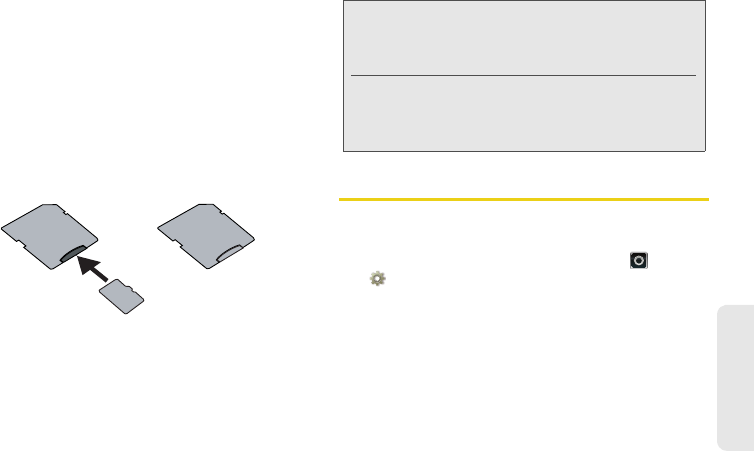
2G. microSD Card 51
microSD Card
Using the microSD Adapter
The microSD adapter allows microSD cards to be used
in SD-compatible devices such as digital cameras,
printers, and computers. Before using, you will need to
insert the microSD card into the microSD adapter.
To insert the microSD card into the microSD adapter:
ᮣ
With the label side of the microSD card facing up,
insert the card into the supplied microSD adapter,
and gently slide the card until it is fully inserted.
To remove the microSD card from the microSD adapter:
ᮣ
Hold the front edge of the microSD card, and
gently pull outward to remove it from the adapter.
microSD Settings
Viewing Memory in the microSD Card
1. With the microSD card inserted, select >
Settings > SD card & phone storage.
2. The following information will be displayed:
Ⅲ
Total space displays the capacity of the memory
card.
Ⅲ
Available space displays the amount of free
memory space.
Tip:
If your computer has an SD card slot or if you have an SD
card adapter, you can use the microSD card and adapter
to transfer files such as audio files, pictures, and videos
directly between your computer and your microSD card.
When you insert the card into your computer, select
Open folder to view files using Windows Explorer
(or a
similar option) and drag and drop files using the available
folders.
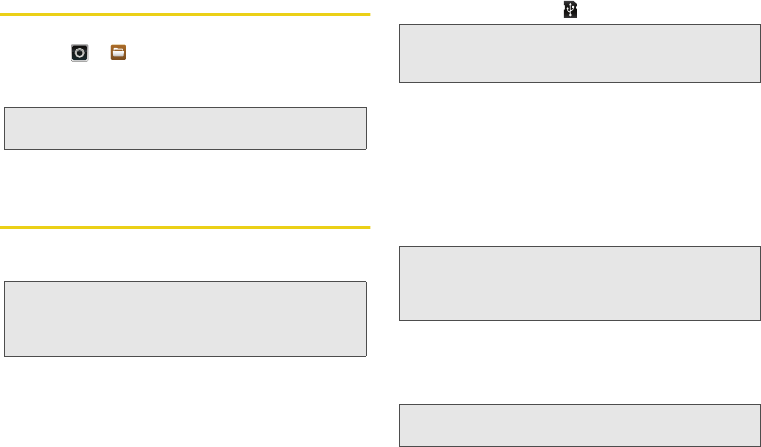
52 2G. microSD Card
File Manager
ᮣ
To see the files on your phone and memory card,
touch >
FileManager
. Touch a file or folder to
open it. Touch and hold a file to
Share
,
Rename
, or
Delete
it.
Connecting Your Phone to Your
Computer
You can connect your phone to a computer with a USB
cable.
1.
With a memory card inserted, and your phone
showing the home screen, connect a Motorola
micro USB data cable from your phone’s micro
USB port to a USB port on your computer. Your
phone should show in the status bar.
2.
On your phone, flick down the status bar to see the
USB connection options.
3.
Touch an option:
Ⅲ
Motorola Phone Portal
: Connect your phone and
computer with a cable or a Wi-Fi network to share
files through an easy-to-use home screen.
Ⅲ
Windows
®
Media Player Sync
: Share media files
between your computer and phone.
Ⅲ
USB mass storage
: Drag and drop files between
your computer and memory card folders. When
you’re done, use “Safely Remove Hardware”
before disconnecting the USB cable.
Note:
Do not remove your memory card while your phone is
using it or writing files on it.
Note:
The first time you use a USB connection, your
computer may indicate that drivers are being installed.
Follow any prompts you see to complete the
installation. This may take a few minutes.
Note:
Make sure to connect the phone to a high power USB
port. Typically, these are located directly on your
computer.
Note:
This device can be administered through Microsoft
Exchange server security policies. Additional security
policies may be applied to your device depending on
rules set by your company.
Note:
You can’t use the files on your memory card with your
phone while it is connected to the computer.
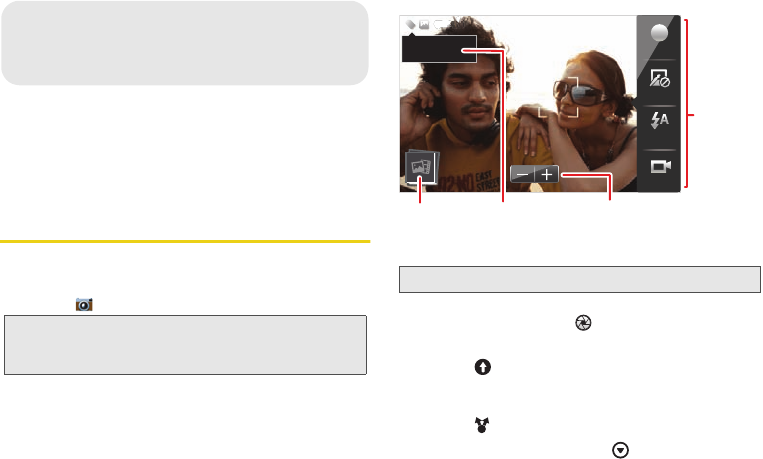
54 2H. Camera
ࡗ
Taking Photos (page 54)
ࡗ
Recording Videos (page 56)
ࡗ
Viewing Photos & Videos (page 57)
ࡗ
Managing Photos and Videos (page 58)
Taking Photos
Take that family photo, and post it online for everyone
to see.
1.
Touch .
2.
To take the photo, touch the viewfinder to lock the
focus, and then touch to take the photo.
Ⅲ
To upload the photo to an online photo album,
touch . You can set your Quick upload album
when you upload your first picture.
Ⅲ
To send the photo in a message or post it online,
touch .
Ⅲ
To delete the photo, touch >
Delete
.
Tip:
You can also program the side key on your phone to
open the camera. See “Programmable Side Key” on
page 16.
2H. Camera
Note:
Photos are stored on your microSD memory card.
5
5
5
5
5
3
3
3
3
3
3
3
3
3
3
3
3
3
3
3
3
P
P
P
P
P
P
P
P
P
P
P
P
P
P
P
P
P
P
P
P
P
P
5
5
5
5
5
3
3
3
3
3
3
6
6
3
3
8MP 536
5
3
6
333
3
33
3
3
3
3
3
5
5
5
5
5
5
5
5
5
5
5
5
5
5
5
5
5
5
5
5
5
5
5
5
5
5
5
5
5
5
5
5
5
5
5
5
5
5
5
5
5
5
5
5
5
3
5
5
5
5
5
3
3
3
6
6
6
6
6
6
6
6
6
6
6
6
6
6
6
6
3
3
3
3
3
3
3
3
3
3
3
6
33
3
3
5
5
5
3
3
3
3
3
5
3
3
5
5
5
3
3
3
3
3
3
3
3
5
3
3
3
3
3
3
3
3
3
3
3
3
3
3
3
3
3
3
3
3
3
6
6
6
6
3
6
6
6
6
6
6
6
6
6
6
6
3
3
3
6
6
6
3
6
3
3
6
66
6
3
6
6
3
3
3
3
3
3
3
3
3
3
6
6
6
6
3
3
3
6
6
6
6
6
6
6
6
6
6
666
6
6
3
3
3
3
3
3
3
3
3
3
3
3
3
3
3
3
3
3
3
6
66
6
3
3
3
3
3
3
3
3
3
3
3
3
3
3
3
3
6
6
6
6
6
6
6
66
3
3
3
3
3
3
3
3
3
3
3
3
3
3
3
3
3
3
6
6
333
3
3
3
3
6
6
666
6
6
6
6
6
6
6
6
6
6
6
6
66
6
6
6
6
6
6
6
6
6
6
6
6
6
6
6
6
6
6
6
6
Scenes
Flash
Effects
Switch to
Chicago,
Illinois
WSWSWS
2989
Scenes
Flash
Effects
Switch to
A
Chicago, Illinois
Photo
Capture
Settings
Adjust for
greater
creative
contol.
Tag photos with
your location.
Go to your
picture gallery.
Zoom in or out.

2H. Camera 55
Camera
Photo Options
You can make adjustments to optimize your shot.
Touch a button on the right side of the screen to make
changes (touch the screen to turn on the buttons if
necessary):
•Scenes: Adjust for better image capture in different
environments: Auto, Portrait, Landscape, Sport, and
more. Touch the screen when finished to return to
the viewfinder.
•Effects: Change photo look: Normal, Negative, Black
and White, and more.
•Flash: Set Flash On, Flash Off, or Auto Flash.
•Switch to: Toggle between photo and camcorder
modes.
Camera Settings
In the viewfinder, touch >
Settings
to open the
camera menu and adjust these settings:
•Picture Resolution: Adjust for optimal resolution.
•Video Resolution: Adjust for best resolution for your
needs.
•Quick upload album: Automatically upload photos to
accounts you select, such as Facebook, MySpace,
Photobucket, and more.
•Face Detection: Let the viewfinder automatically
detect a face and adjust image quality accordingly.
•Exposure: Select the best exposure for your
environment.
•Shutter Tone: Select whether your camera makes a
sound when you take a photo.
•Shutter Animation: Select how the viewfinder looks
when you take a photo.
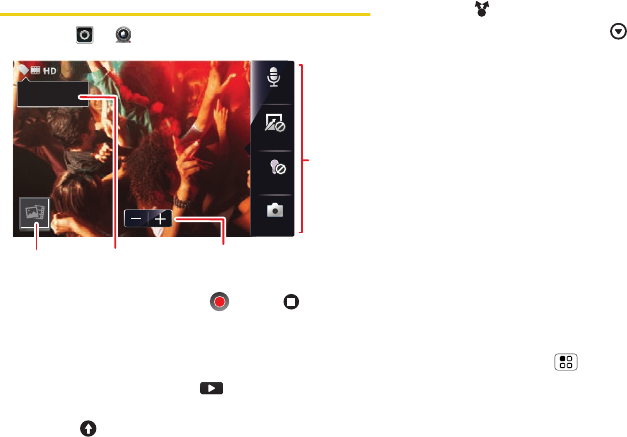
56 2H. Camera
Recording Videos
1.
Touch >
Camcorder
.
2.
To record the video,
touch . Touch to stop
the recording.
3.
Open your gallery and touch a video to view
options:
Ⅲ
To play the video, touch .
Ⅲ
To upload the video to an online album,
touch .
Ⅲ
To send the video in a message or post it online,
touch .
Ⅲ
To delete the video, touch >
Delete
.
Video Options
You can make adjustments to optimize your video.
Touch one of the buttons on the right side of the
viewfinder to make changes (you may need to touch
the screen to make the buttons appear):
ⅷ
Scenes:
Adjust for better video capture in different
environments:
Auto
and
Night
ⅷ
Effects:
Change video look:
Normal
,
Negative
,
Black
and White
, and more.
ⅷ
Light:
Turn a light on or off to adjust for the lighting
where you are recording.
ⅷ
Switch to:
Toggle between camcorder and camera.
Camcorder Settings
In the viewfinder, touch > Settings to open the
camcorder menu and adjust these settings: Video
Resolution, Shutter Animation, and more.
Chicago,
Scenes
Light
Effects
Switch to
Chicago Illinois
02:54:34
Video
Capture
Settings
Adjust
for
greater
creative
contol.
Tag videos with
your location.
Go to your
gallery.
Zoom in or out.
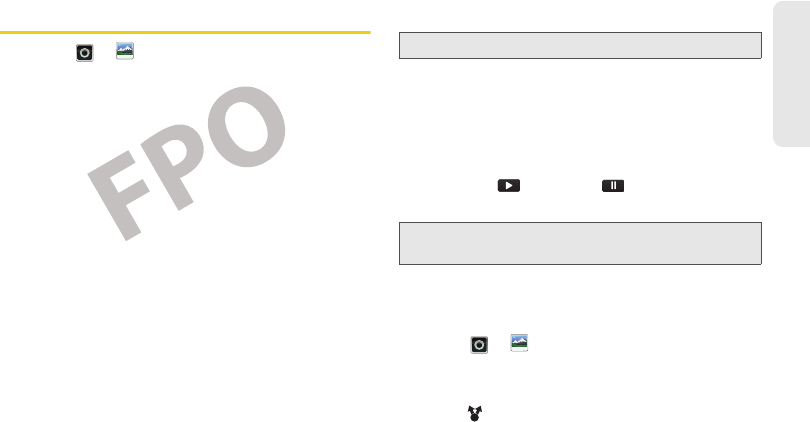
2H. Camera 57
Camera
Viewing Photos & Videos
ᮣ
Touch >
Gallery
.
Touch a folder to display all of its photos or videos.
ⅷ
Camera roll:
All of the captured photos and videos on
your phone.
ⅷ
My Tags:
Photos and videos grouped by tag.
ⅷ
Folders
– Photos and videos grouped by the folders
where they’re saved.
ⅷ
All photos
– All photos, no groupings.
ⅷ
All videos
– All videos, no groupings.
View Photos and Videos
The
Gallery
first shows photos and videos as
thumbnails. Scroll through the thumbnails by flicking
them left or right. Touch a thumbnail to select it for
viewing or playback.
When you select a thumbnail, it is enlarged to normal
viewing size. Videos are paused at the beginning.
Touch the play and pause buttons on the
screen to control video playback.
Share Photos and Videos
To send your photo in a message or post it online:
1.
Touch >
Gallery
.
2.
Select an image.
3.
Touch and hold a photo or video, and then
touch .
SCREEN NOT YET AVAILABLE
Tip:
Turn the phone sideways for a widescreen view.
Note:
To see the buttons while a video is playing, touch the
display.
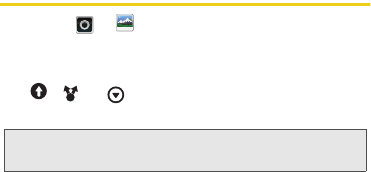
58 2H. Camera
4.
Choose how you want to share, such as
Bluetooth
,
Email
,
Text Messaging
, and more.
Managing Photos and Videos
1.
Touch >
Gallery
.
2.
Select an image.
3.
Touch and hold a photo or video, and then touch
, , or (to edit, delete, set as, print, and
more).
Tip:
To copy photos to/from a computer, go to “Connecting
Your Phone to Your Computer” on page 38.
